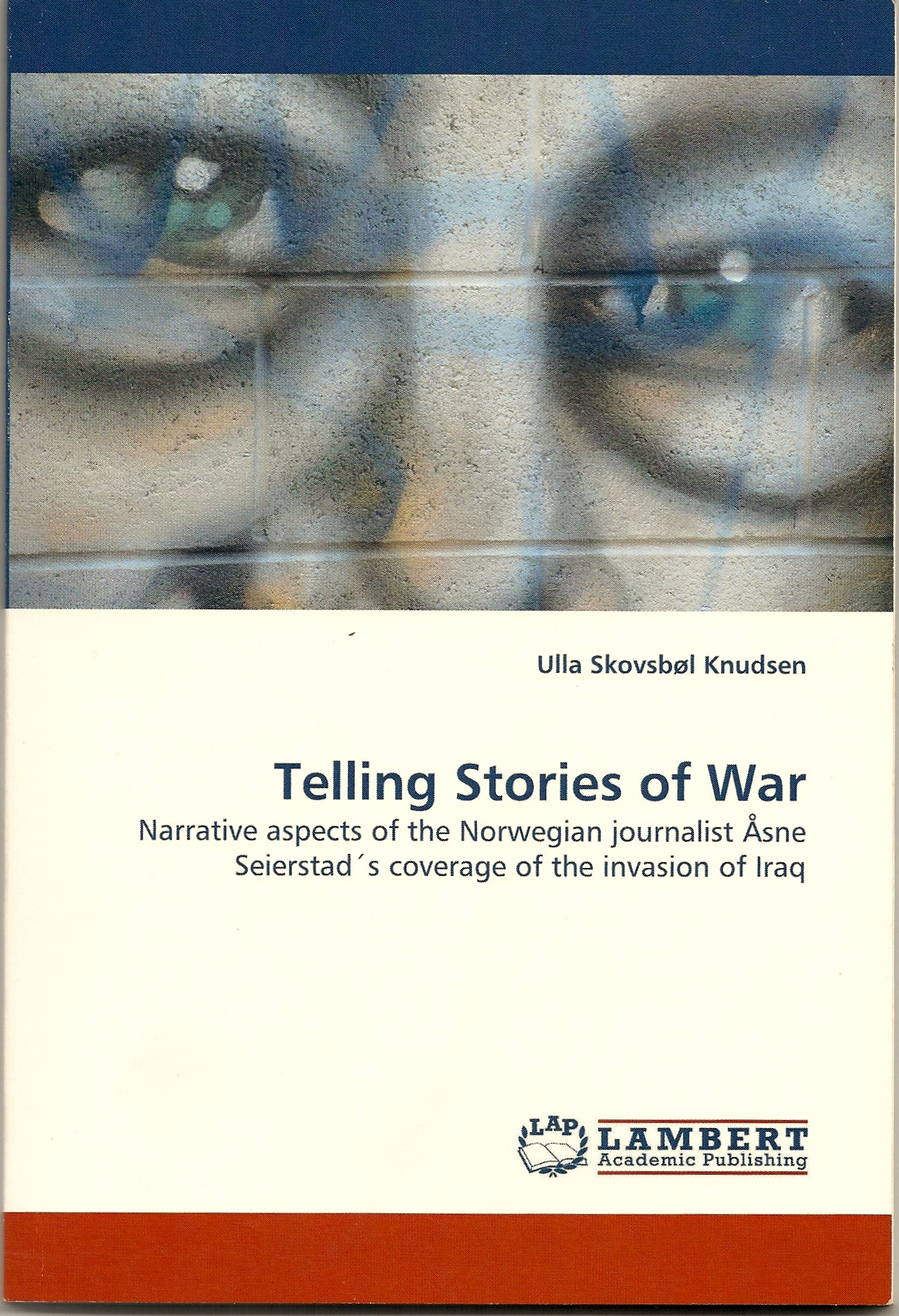Jeg er cand. mag. i medievidenskab med en Erasmus Mundus Master uddannelse i globalisering og journalistik fra Aarhus, Amsterdam og Swansea universiteter. Desuden har jeg sidefag i Europastudier (AU) og Mellemøststudier (SDU)
Speciale: Fortællende journalistik i krigsreportagen
Læs også om Aasne Seierstad bog om Anders Bering Beivik “En av oss”
Specialet Tellling Stories or Informing the Public om fortællende journalistik i krigsreportagen undersøger Åsne Seierstads dækning af invasionen i Irak i 2003 for Politiken og sammenligner den med Erik Thomles dækning i Jyllands-Posten.
Bliver en artikel mindre troværdig eller mere mindre objektiv, hvis den er skrevet som fortælling og ikke som nyhed? Hvordan genkender man den fortællende stil, og hvad betyder stilen for læserens forståelse af indholdet?
Det er nogle af de spørgsmål, specialet søger at besvare. Det undersøger genren fortællende journalistik – narrative journalism – afdækker stilens opståen, historie og udvikling parallelt med den traditionelle nyhedsstil, og giver et bud på en analysemetode, der kan bruges til at identificere fortællende elementer i journalistik.
I specialets casestudy afprøves analysemetoden i en sammenlignende analyse af udvalgte artikler fra Åsne Seirstads Irak-dækning i 2003 og Erik Thomles dækning af de samme begivenheder i Jyllands-Posten.
 Dissertation, Swansea University, 2009
Dissertation, Swansea University, 2009
Telling stories or informing the public. Narrative journalism in war reporting
“Telling Stories or Informing the Public” is a dissertation from Swansea University on the narrative journalism and on the narrative aspects of the Norwegian journalist Åsne Seierstad’s journalism in the Danish paper Politiken on the war in Iraq 2003.
This study develops a definition of narrative journalism and a qualitative method for analysing the narrative dimension of news stories. The method is applied in an in-depth of analysis of four front-page articles by Seierstad. The articles are compared to the coverage of the same events by another journalist, Erik Thomle, in the competing newspaper Jyllands-Posten. Both samples are held up against the general norms of factual/objective news journalism.
The analysis demonstrates that out of the four Seirstad-articles one was purely narrative, two were semi-narrative and only one was definitely non-narrative. However, when a applied to a larger sample of her articles – 18 front-page stories published from January to April 2003 – the narrative style proved to be less dominant.
But still, Seierstad was to a large extent using literary techniques in her journalistic writing on Iraq which is unusual in news journalism and especially in front-page articles on hard news topics such as war and conflict. The study argues that the use of literary techniques allows for a different perception of the stories, and that a semi-narrative style that combines narrative writing with the classical news style is more efficient in regard to communicating content than the factual/objective news style is when applied on its own.
Dissertation Swansea University, 2009. Ulla Skovsbøl
Læs her Content & Abstract og Telling Stories of War,
 Ulla Skovsbøl Knudsen:Telling Stories of War
Ulla Skovsbøl Knudsen:Telling Stories of War
Narrative aspects of the Norwegian journalist Åsne Seierstad’s coverage of the invasion of Iraq, Lambert Academic Publishing, 2011
Køb den på Amazon.com
ISBN-10: 9783843391061
ISBN-13: 978-3843391061
